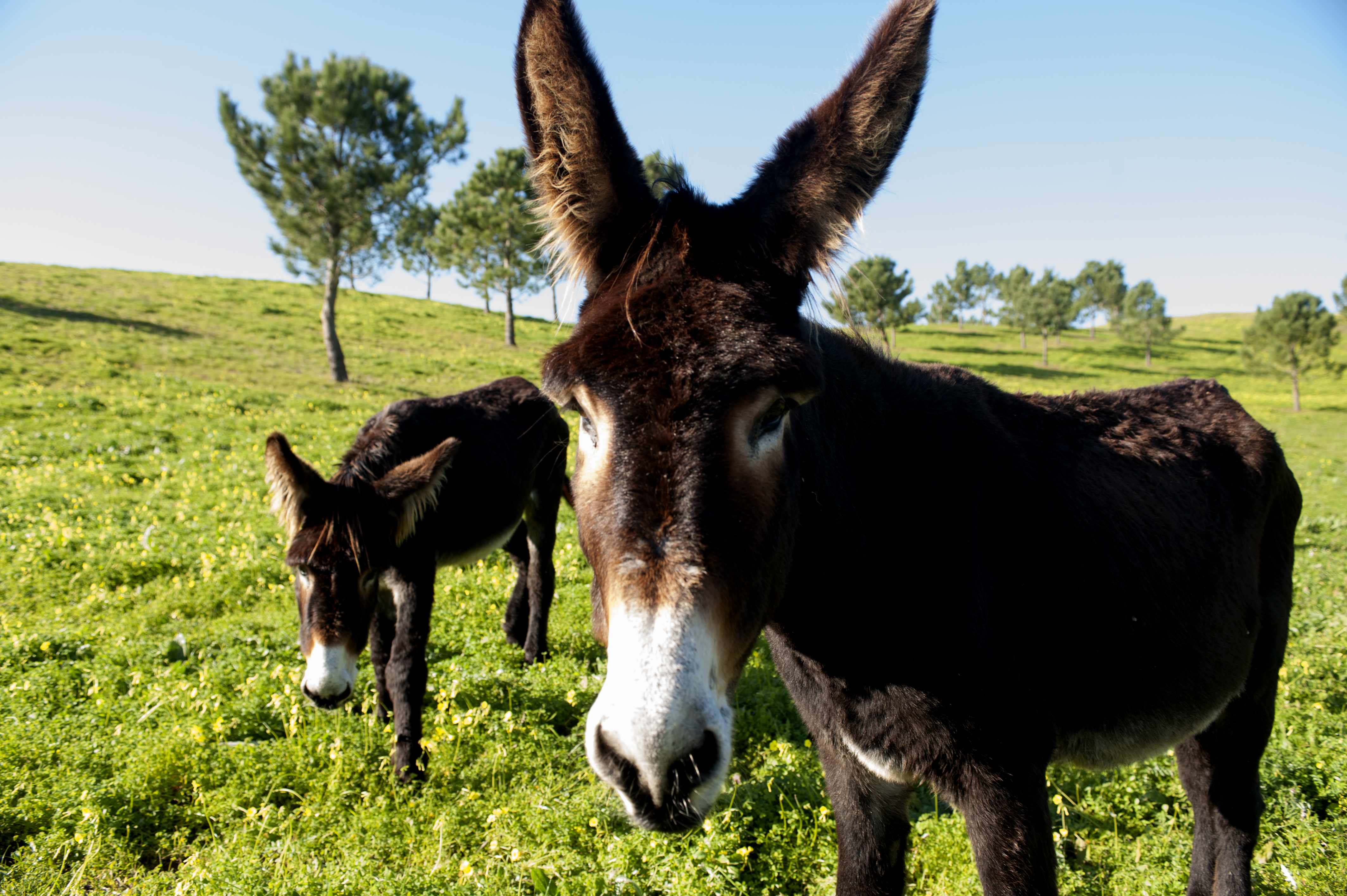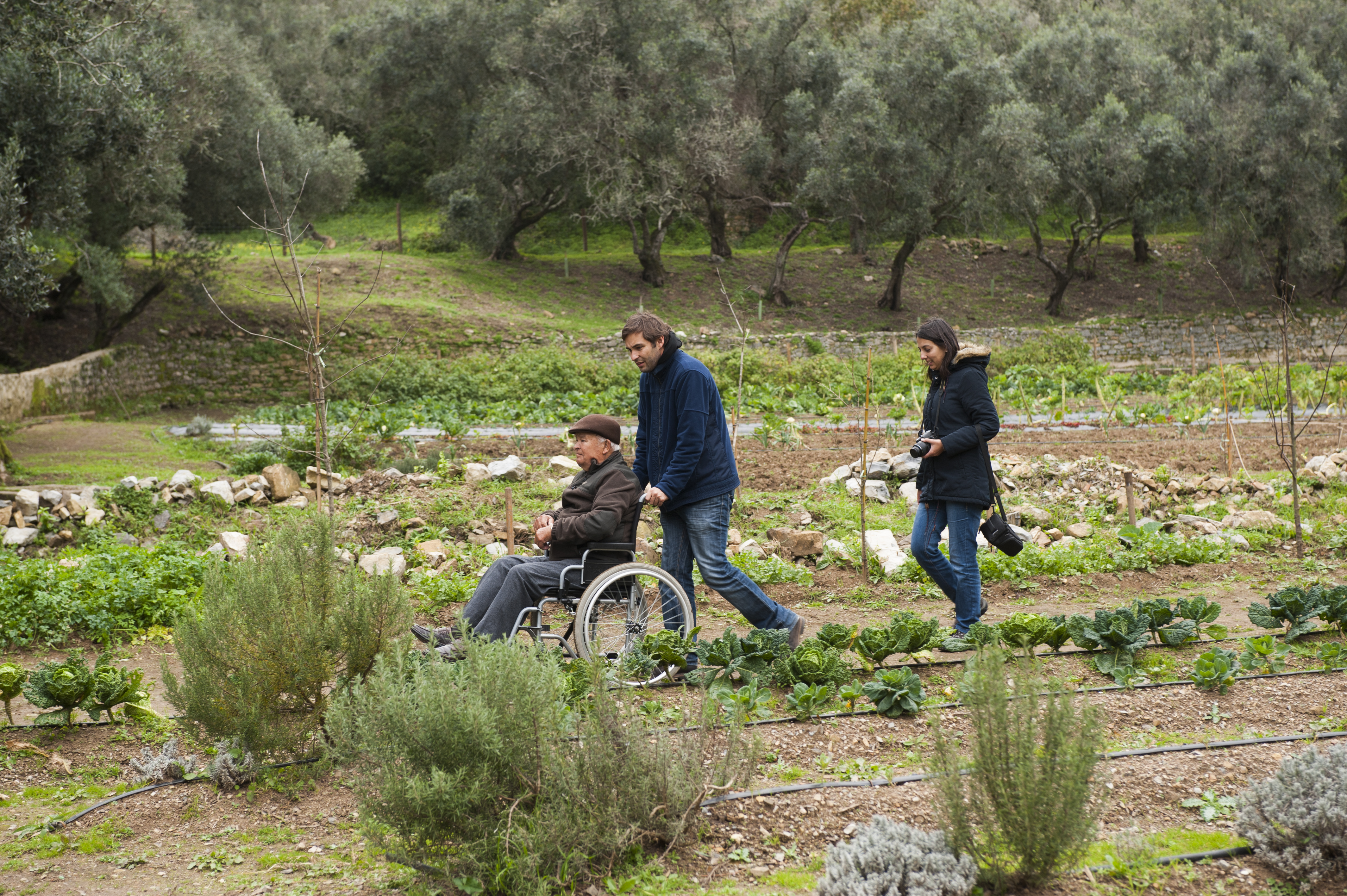Quinta do Pisão is part of the Sintra-Cascais Natural Park, which belongs to the Natura 2000 network, and is the redevelopment of abandoned agricultural land into a working farm and large public park offering walking and cycling paths, as well as a range of events based around sustainable tourism. Since the changes were made to Quinta do Pisão, local biodiversity has increased, and local people as well as visitors, primarily from Lisbon, increasingly use the space for recreation.
The project consists in the restoration of abandoned agricultural and forest farm land into a large nature parc, situated at Natura 2000 site Sintra-Cascais PTCON0008, reestablishing habitats. Cascais Ambiente, the public body that advises Cascais municipality on environmental issues, is responsible for the management of the parc. A landscape scales conservation project was implemented in the 380ha abandoned farm, concerning the preservation of the Natura 2000 habitats', species and the landscape mosaic. The aim was to revert the abandoned process, to re-activate the farm as a living landscape. It was also expected to respond the local communities' expectation for having access to natural areas for recreational purposes. The project also aims to engage the local community and raise awareness about the site importance, offering, walking and cycling paths, universal paths, horse and donkey trails as well as organic farm products and a range of workshops related to nature. Forest management and farming activities were directed to habitat management, increasing the landscape mosaic and promoting biological diversity. Moreover, due to the creation of walking and cycle paths, the parc provides visitors with a new resource for recreation, education and a heightened well-being at a site which would otherwise have had poor public access. Visitors can pick and purchase home grown seasonal organic produce in the park's farm, with the aim to encourage people to eat more healthily and to raise their awareness on the value of food. The outcome shows that peri-urban natural areas can play an important role as landscape transition areas, allowing access to the countryside and natural areas. The project also shows that municipalities can and should be more involved in the requalification and preservation of non-urban areas and the development of large landscape conservation projects to manage and control urban sprawling.
Please highlight how the project can be exemplary in this context
The implemented actions seek to achieve the sustainability of the project in several aspects. In habitat recovery, it has made the space more resilient to climate change and forest fires. In community involvement, through volunteering, education and environmental awareness. Establishing partnerships with Social Solidarity Institutions and local contractors, promoting the local economy and economic sustainability.
Please highlight how the project can be exemplary in this context
The implementation of the project took into account aesthetic issues and the valorization of the visitation experience. Only native and endangered species were used, including the campaniça sheep breed, the Asinine breed of Miranda and the Sorraia equine breed. In the recovery of the built heritage, were used almost exclusively local materials, such as stone and wood, respecting and using old construction techniques, which ensured the memory of the site. All space allows a safe use to the visitor, with directional and interpretive signaling.
Please highlight how the project can be exemplary in this context
The Quinta do Pisão rural workers were signaled and selected by the municipality social services in a reintegration project for persons with drug and alcohol addiction and long term unemployed. More than twenty-four were engaged in the process, currently four of them were invited to work at full time and currently manage the site, and engage the visitors helping them to learn about the vegetable they can pick and how they can be used. A local social institution, who work with people with mental disabilities, was involved in the production of jams from the farm’s products specially fruits. All products produce, jams’, honey, vegetables and handmade products are available in the farm shop, promoting the sustainable development, local and seasonal food. Educational programs organized in the park promote social inclusion as they are available to everyone (and often offered for free). A nature workshop program promotes activities like bird watching, mushroom and wild plant identification, donkey trails and many other activities. A Social Design project was implemented in partnership with care and mental disability institutions, were more than 155 persons were involved in creating with a designer, handmade products to be sold in the visitor center shop, all related to the experience in being on the parc.. Next to the interpretation center was built an accessible trail, according to the principles of universal design, with about 1.5 km that provides a sensory experience to visitors. The trail can be traversed by blind, wheelchair or with adapted TT vehicles. All aspect regarding social cohesion are communicated to the visitors.
Please highlight how this approach can be exemplary
Quinta do Pisão combines sustainability, inclusion and aesthetic quality, as intrinsic vectors of the creation and implementation of the project. Sustainability in the recovery of an environmentally degraded area, social justice to make accessible space to all and aesthetic and functional quality to make the visit a full experience.
The parc has a Biodiversity Action Plan with an independent budget to implement all nature conservation and general management actions. All income is reinvested in the parc to promote self-sustainability. The parc has a 13 Ranger team on full-time, who assure the regular maintenance, visitor support, farm activities, and volunteer groups. They also collaborate with the technical team in the habitat management actions. Before the parc existed, the site was abandoned with no visitors or used in any way, and now the visitor’s monitorization report, show that annual visitation is growing: 113 000 visitors in 2019, 144 000 in 2020 and 150 000 in 2021. This is undoubtedly a project with a very strong community support and political commitment mainly because, according to a survey, visitors use the parc in a regular way and recognize the importance of the parc in their way of living. All products (honey, jams and handmade products) are sold in the parc’s shop and also in four other nature visitor centers managed by Cascais Ambiente, as well as the tourism office at Cascais downtown.
Please also explain the benefits that derived from their involvement.
The parc as incorporated the community in its regular activate to empower the visitors and to raise awareness about the natural and heritage values was in a certain way, the “formula” to gain political and financial support to full restoration program. The re-activation of farming with the production of vegetables, honey, jams and handcraft products, had a very powerful impact in the community, because they gain access to high quality products directly from the producer and at the same time they know they are directly contributing to nature conservation, site maintenance and supporting jobs and social partners. Volunteer activities are carried out for habitat recovery, with brandishing involvement of the population, namely in the control and eradication of invasive species, construction of nest boxes for birds, planting of trees and shrubs, natural engineering interventions. Regarding the fact Cascais it’s a urban area, having a “farm” with such a landscape and open to visitor to enjoy the use in for walks, nature contact was also a very powerful toll to promote good social behavior and nature respect and conduct.
The challenges of climate change, habitat loss and urban sprawl.
The all concept for the project was to show that the “benefits” from the ecosystem services are not only economic and that visitors will benefit with the fact they can improve their lifestyle not only by gaining access to nature but also to learn, enjoy and even “taste” the best nature must share. This means that all farming activities, like sheep raising, donkeys, horses for visitors they represent a “steppingstone” to enjoy the landscape and with the bee heaves and horticultural a way to engage people. Vegetable garden were visitor can “pick” their own products and in between they learn about local, organic and seasonal, beside the fact it’s a social project, the actual workers were long time unemployed people. The “honey” project were beekeepers had no safe place to put heir beehives and have better working conditions, we manage to find a place and recover a small warehouse concerting it in a “honey-house” were beekeepers can extract the honey and run workshops and demonstrations for visitors especially kids. The Social design initiative were people we mental disease and elderly people work in productions of a handmade object to be sold in the visitor center, its not about the economic benefit form the selling but the social value of getting this group off the population engaged with nature and biodiversity. The wool from our sheep’s it’s being sold in partnership with an entrepreneur who works with traditional artifact to produce wool products. Also the production of essential natural herb oils and soaps, made with wild herbs, honey and wax from our bee heaves, in partnership with an private entrepreneur and a social partner were we help to promote local jobs occupational therapy.
Please provide clear documentation, communication of methodology and principles in this context.
The same typology of approach can be done in similar circumstances, namely through the reactivation of a peri-urban cultural landscape that, although it has lost its activity, it can be reinvented and adapted to our circumstances and meet the expectations of a community increasingly interested in having access to natural space and sensitive to a healthy lifestyle.





@Cascais Ambiente, 2022
Content licensed to the European Union.